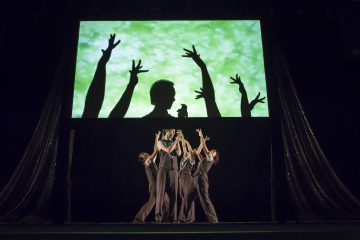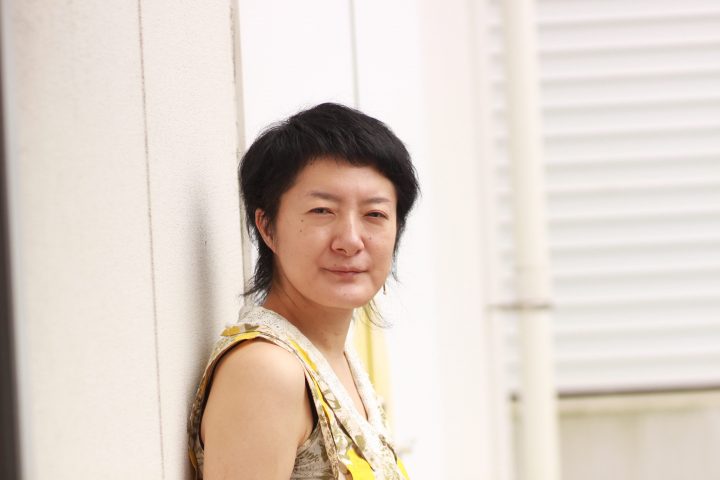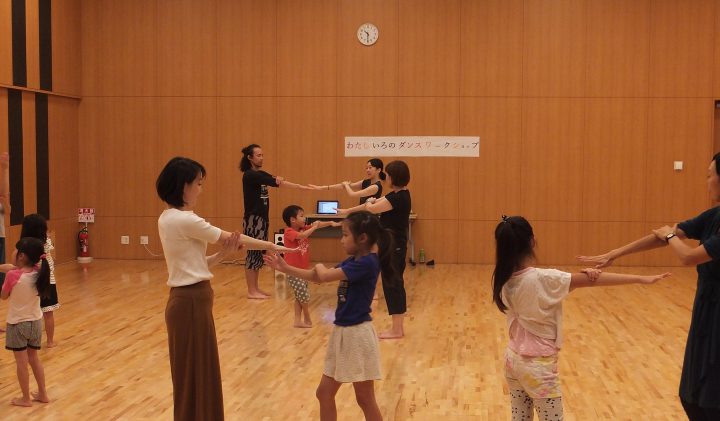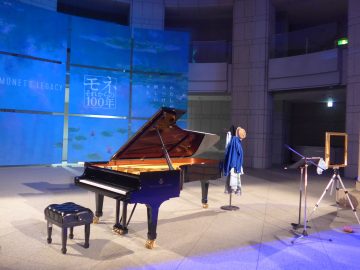TPAM Direction Director: Interview with Tang Fu Kuen
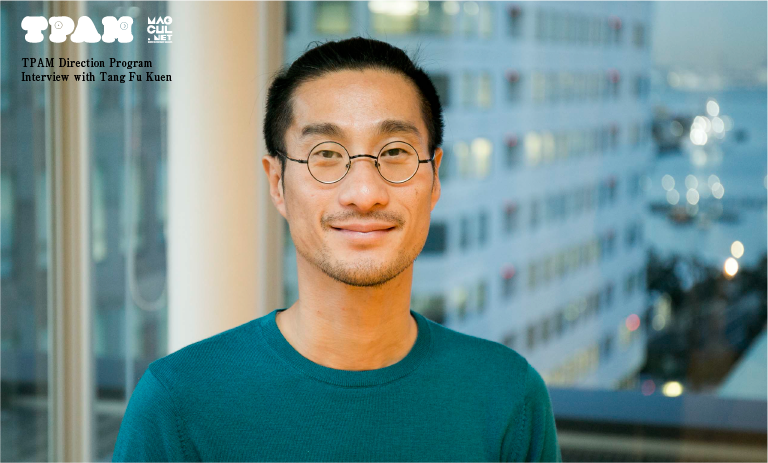
TPAM (Performing Arts Meeting in Yokohama), which was launched in 1995 with the aim of becoming an international platform for Asian performing arts works, has been bringing together contemporary performing arts professionals from across countries and regions, and through a variety of programs such as performances, discussions, and meetings, it has been providing information exchange, mutual learning, and networking. This year's TPAM, held in February to mark its 20th anniversary, appointed creators engaged in unique activities as directors, and one of the directors of the "TPAM Direction" project, which creates works with free concepts and new perspectives, was Tan Fu Kuen, an independent curator based in Bangkok who has worked on many projects in Asia and Europe. We spoke to Tan after the end of the entire program, who was well received for his program introducing a part of Southeast Asian performing arts, which has been attracting international attention in recent years.
2015.5.25 interview & text: Eiji Kobayashi
Photo: Masamasa Nishino
TPAM's first overseas director
--- You are the first director from overseas to be selected for the "TPAM Direction" program. How did TPAM commission you and what were your expectations for the program?
I have been following TPAM since it began 20 years ago, and have been watching it carefully every year for the past five years, so I think I have a basic understanding of what TPAM aims to achieve.Specifically, they asked me to create a program for the TPAM Direction that would focus on timely artists from Southeast Asia and the themes and interests they have.
What are your criteria for selecting artists?
Not just this time, but my basic approach as a curator is to build a relationship with an artist through dialogue for many years. I don't just look at the work, but the artist themselves, and how the artist approaches their work, what interests them, and how they materialize their ideas. In that sense, I value dialogue very much. Among the works I selected this time, in the case of Aisa Hokson (Philippines), I have been involved in all of her performing arts productions over the past few years. I have had a relationship with Mulati Suryodarmo (Indonesia) for 7 or 8 years and have been watching her works, but this is the first time we have worked together. As for Eko Supriyanto (Indonesia), I first had the opportunity to see the work before it was completed in November last year. After that, while talking with Eko, I realized that he wanted to make this work into a more complete piece, and I also felt that there was a strong possibility. So I officially commissioned him as a TPAM commission work, and the work was completed this time as "Cry Jailolo".
What is "Southeast Asianness"?
---I understand that "Southeast Asia" is a diverse region, but in your opinion, if there is something that is "Southeast Asian-like," and in particular if you were to define "Southeast Asia within Asia," what characteristics would you have?
Some of the factors that may have shaped Southeast Asia - a century of colonialism, followed by nationalism and military dictatorship, rapid urbanization, neoliberalism and globalization - I think the history of violence in various forms can be cited as commonalities. That said, it's difficult to say anything definitive. Well, maybe a tropical climate (laughs). Climate influences how people perceive things.
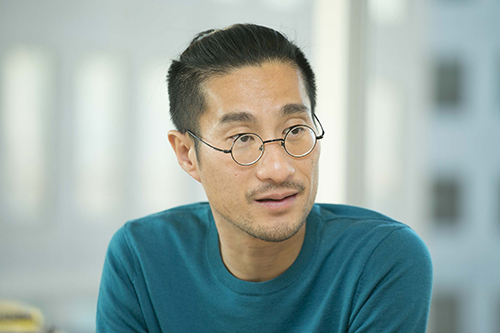
---However, even on a global scale, it seems that Southeast Asia has been producing a succession of noteworthy works in fields such as art, film, and performing arts in recent years.
In particular, the attention of the art world has definitely shifted to Southeast Asia in recent years. However, the situation of performing arts is a little different from that of video and film. In the case of film, I think one factor is that the digital revolution has enabled young filmmakers to produce and disseminate works independently. In comparison, performing arts have moved a little slower, which is related to differences in language, cultural context and production structure. Video is easy to distribute, but performing arts are still limited in the scope of their reach, as some aspects cannot be fully conveyed unless they are seen live. In that sense, I believe TPAM is an important platform for communicating Asian performing arts to the world. This is clearly evident in their dedicated efforts.
Work in Progress "Host"
--- Aisa and Murati have presented the same works in Europe, but is there any difference in the context when presenting them in Japan? Or, were there any differences you noticed in the reactions when you presented them in Japan this time?
Of course there are differences. In particular, the work Host, which was created through a residency, is based on an investigation of the "Japayuki" phenomenon seen among Filipino entertainers working in Japan, and Japanese audiences have literacy in the themes, language, symbols, and the kind of "Japaneseness" that the artist is trying to explore. Therefore, in the post-performance talk, there was a stronger response from Japanese audiences. The main issue that this work is trying to convey, how gender and service are embodied and performed, is culturally coded and should be examined by Japanese audiences more than, for example, Europeans. Aisa first presented this work in a work-in-progress state, and completed it while considering the different perceptions depending on culture and various criticisms.

Aisa Hokson, Work in Progress “Host” TPAM2015/Photo: Hideto Maezawa
Asia and the West, tradition and modernity
--- As with all art, I think performing arts also have the problem of first having to express themselves based on Western values and frameworks. How can we bring in awareness of issues related to the so-called Asian body and history? Just as Butoh once emerged from Japan and spread to other parts of the world, I found this interesting in this program, and I felt that it could lead to the creation of something new.
The fusion of these two opposing forces, tradition and modernity, gives birth to new expressions. I think that contemporary artists are all presenting this rich context and its influences in their work. The underlying conditions brought about by the legacy of polarization and hybridity inevitably create an authenticity of place, and artists are eager to articulate that reality and urgency. This has a major impact on the development of performing arts in Southeast Asia.
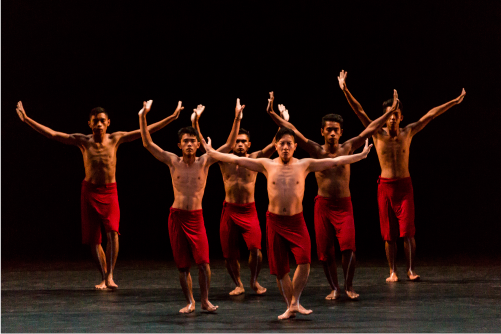
Eko Supriyanto "Cry Jailolo" TPAM2015/Photo: Hideto Maezawa
---Compared to other Japanese works in this edition, I felt that the issue of identity was a particularly important theme. Is that true?
Artists confirm their identity by creating performances. For example, in Cry Jailolo, Jailolo is a remote island that is seen as a kind of exoticism by Indonesians, but Eko Supriyanto, who choreographed it, collaborated with the people, trained them, and brought them from the surrounding areas to the city to discuss Jailolo's traditions and culture, and to remove the mystique. It is a very political work from the perspective of expression and visibility in the Indonesian archipelago.
Expressions that can only be conveyed through the body
---I think that each piece in this program had room for different interpretations by the viewer, in a good way.
I think what's really interesting about these performances is that they use the body as a tool for expression. They're not just talking about the body, nor are they developing difficult theories; they express themselves directly using the body without logic, and by maintaining the concentration of the viewer, they communicate an artistic statement.
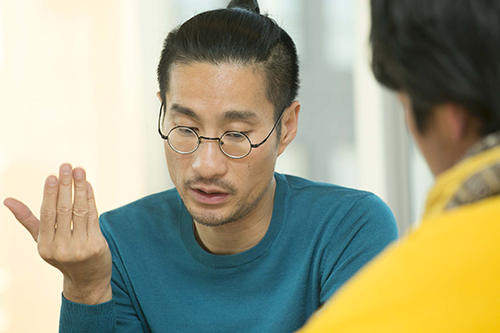
---You can watch videos on the internet, but seeing a performance live is completely different.
That's right. Earlier we talked about the differences between Asian and European presentations, and Asian expressions usually have stronger emotions, more effort and inner energy. The work "Pichet Klunchun and I" in this TPAM co-production dealt with this very theme. It was a work that created a dialogue between the conceptual West and the seemingly intuitive Asia. Of course, it goes beyond this simple dichotomy and tries to analyze the differences from a deeper level.
--- I feel like Asian bodies are gradually penetrating into our world. In Aisa Hokson's "Host," the part where she expressed shunga in three dimensions was more poignant than the other dance expressions.
Another comparison with the West is that ritual and ceremony are still more potent in Asia than they are in the West. They are very physical, emotional, metaphorical and non-verbal in nature and relate to questions of the self. But some artists living in Asia today are reflecting on these situations and trying to find ways to navigate between mind and body, thought and body, ideas and actions.
--- "Death of the Pole Dancer" also begins with setting up the pole, which in itself felt like a small ritual.
You're right. However, what's more important about this piece is that after she sets up the pole, she denies and resists the typical female image and representation that is superimposed on pole dancers, saying, "I'm not a pole dancer, I don't want to show the cliché that everyone thinks of."

Aisa Hokson, "Death of the Pole Dancer" TPAM2015/Photo: Hideto Maezawa
Being independent
---You seem to place a lot of importance on being independent in your curation. What does being independent mean for creativity?
Being independent is very important. More specifically, it is important in the sense that it allows you to have opinions and act with yourself at the center. At the same time, being alone does not mean being lonely, but inevitably leads to collaboration with artists and institutions (public facilities). At the same time, in order to play the role of a kind of intermediary, you need to be able to take advantage of the strengths of being an independent entity and to oppose things that you do not agree with. This is an essential condition for being independent.
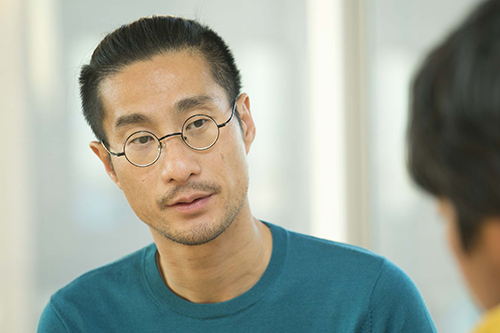
---I feel like Japan is weaker when it comes to independence, and when I saw the works directed by Mr. Tan this time, I also felt a strong respect for your own activities.
"Freedom" requires constant dialogue. It means not doing everything alone, but always having dialogue, building relationships from dialogue, developing them at the right pace, and finally landing on something meaningful. I am very aware that this movement must continue all the time. In other words, to be "free," you need to have many connections, knowledge, and resources. This "freedom" is very important to me.
---Finally, please tell us what you expect from TPAM in the future and if you have any opinions about it.
Rather than just "Japan and Asia" or "Japan and Southeast Asia," I think we need to create a network that connects us through this event. Of course, it's not easy, given geographical issues and various frictions. We're not talking about utopias, but rather we need to make steady efforts to understand each other's differences, share and expand our possibilities together, and work toward creating a structure where we can talk and face each other with peace of mind.
